Range Rover Evoque: Oil Pan
Removal
NOTES:
Some illustrations may show the engine removed for clarity.
Some variation in the illustrations may occur, but the essential information is always correct.
Removal steps in this procedure may contain installation details.
Some illustrations may show the engine removed for clarity.
1. Refer to: Air Conditioning (A/C) System Recovery, Evacuation and Charging - GTDi 2.0L Petrol (412-00 Climate Control System - General Information, General Procedures).
2. WARNING: Make sure to support the vehicle with axle stands. Raise and support the vehicle.
3. Refer to: Engine Undershield (501-02 Front End Body Panels, Removal and Installation).
4. WARNING: Avoid skin contact with the specified material.
CAUTIONS:
Hot fluid.
Be prepared to collect escaping fluids.
NOTE: Collect the engine oil in a clean container.
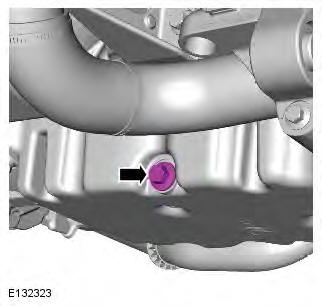
5. Remove the RH front wheel and tyre.
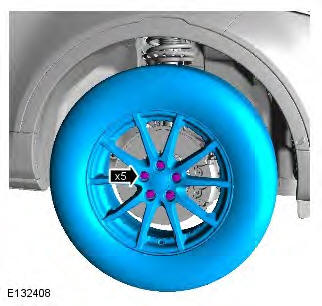
6.
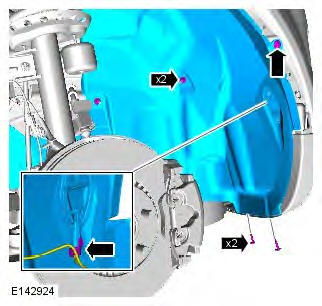
7. Release the accessory drive belt from the A/C compressor pulley.
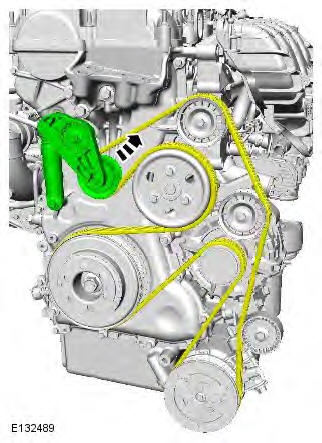
8.
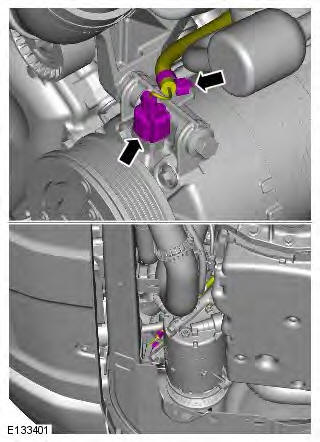
9. CAUTIONS:
Lubricate the new seals with clean refrigerant oil.
Make sure that all openings are sealed. Use new blanking caps.
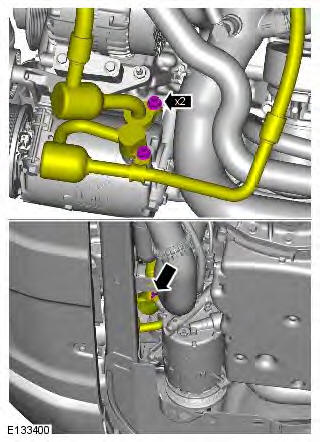
10.
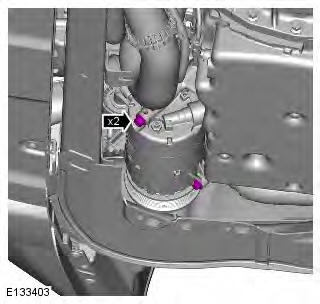
11. NOTE: Loosen the bolt, but do not fully remove.
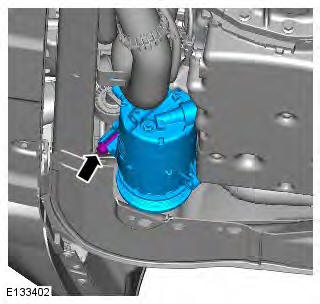
12.
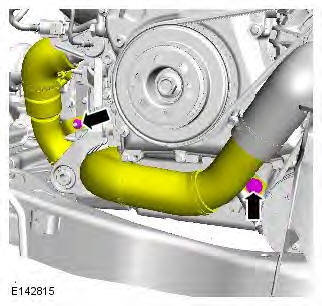
13.
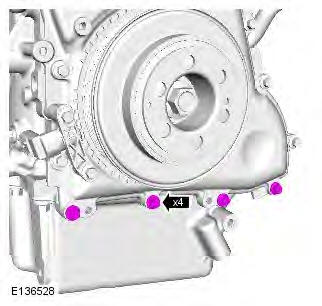
14.
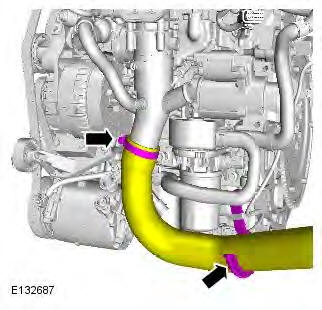
15.
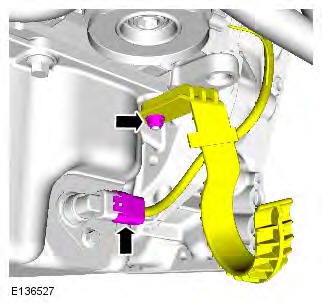
16.
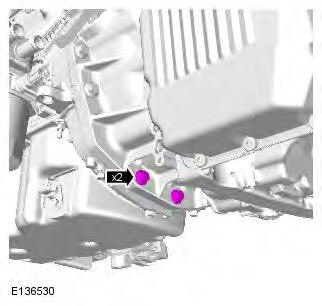
17.
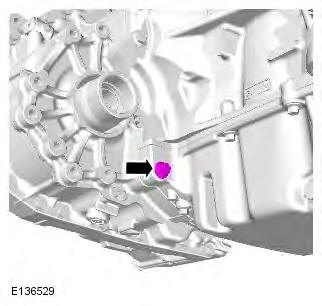
18.
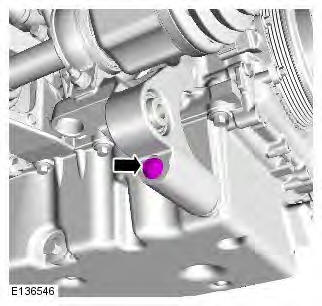
19.
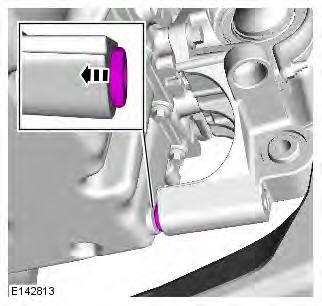
20. NOTES:
Make sure that all traces of the old sealant are removed from the mating faces.
Engine shown removed for clarity.
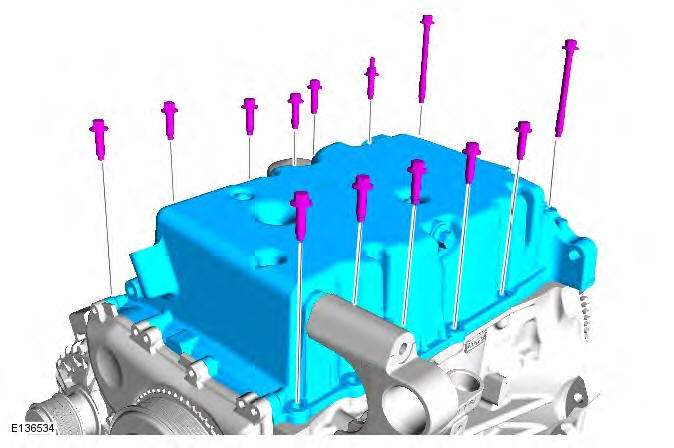
Installation
1. CAUTION: When removing the sealant from the mating faces, make sure that crankshaft rear seal mating face is not damaged. Make sure that all traces of the old sealant are removed from the mating faces.
2. CAUTION: Make sure all mating faces are clean and dry before applying sealant.
NOTE: Apply sealant WSE-M4G323-A6 in a 2-3mm diameter on the engine block as shown. The component must be installed and tightened within 10 minutes of sealant application.
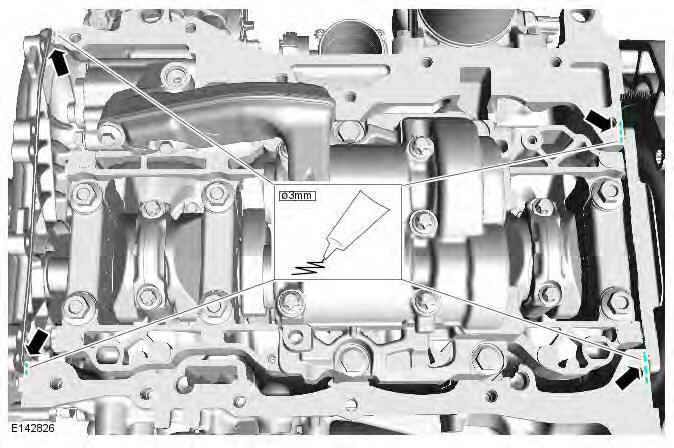
3. CAUTION: Make sure all mating faces are clean and dry before applying sealant.
NOTE: Apply sealant WSE-M4G323-A6 in a 2-3mm diameter on the engine front cover as shown. The component must be installed and tightened within 10 minutes of sealant application.
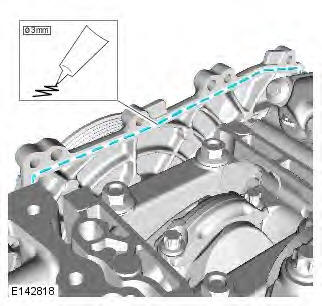
4. CAUTION: Make sure all mating faces are clean and dry before applying sealant.
NOTE: Apply sealant WSE-M4G323-A6 in a 2-3mm diameter on the engine oil sump as shown. The component must be installed and tightened within 10 minutes of sealant application.
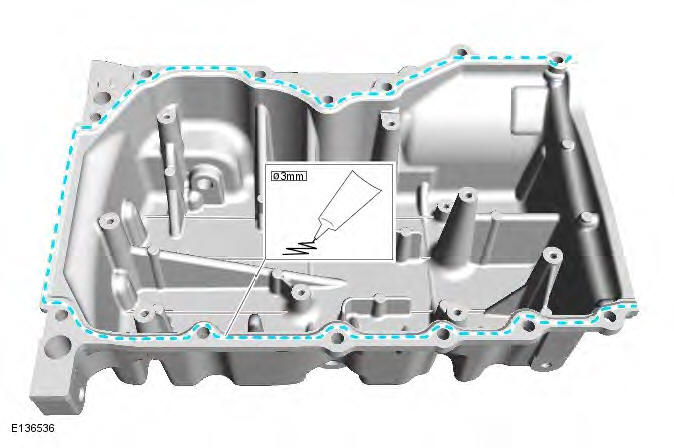
5. CAUTION: Make sure all mating faces are clean and dry before applying sealant.
NOTE: Apply sealant WSE-M4G323-A6 in a 2-3mm diameter on the engine front cover as shown. The component must be installed and tightened within 10 minutes of sealant application.
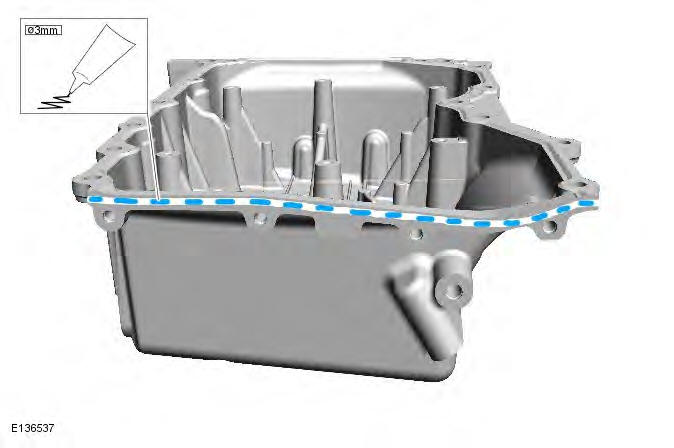
6. CAUTION: Extreme care is required during assembly so that the sealant is not smeared. If the sealant is smeared, the mating faces must be cleaned and new sealant must be applied.
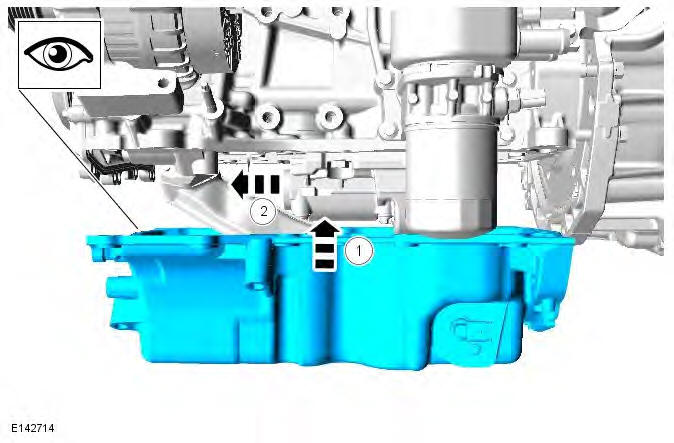
7. CAUTION: Only tighten the bolts finger-tight at this stage.
NOTE: Tighten the retaining bolts in the sequence illustrated.
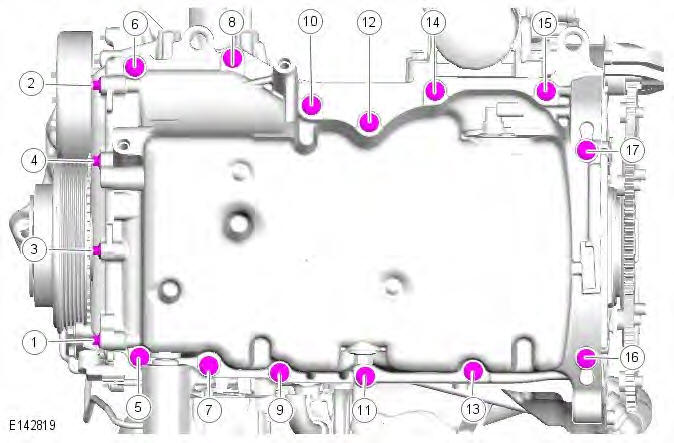
8. Torque: 10 Nm
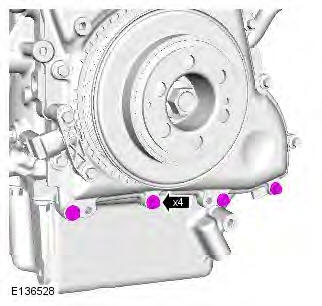
9. NOTE: Tighten the retaining bolts in the sequence illustrated.
Torque:
- Stage 1: 5 Nm
- Stage 2: 10 Nm
- Stage 3: 20 Nm
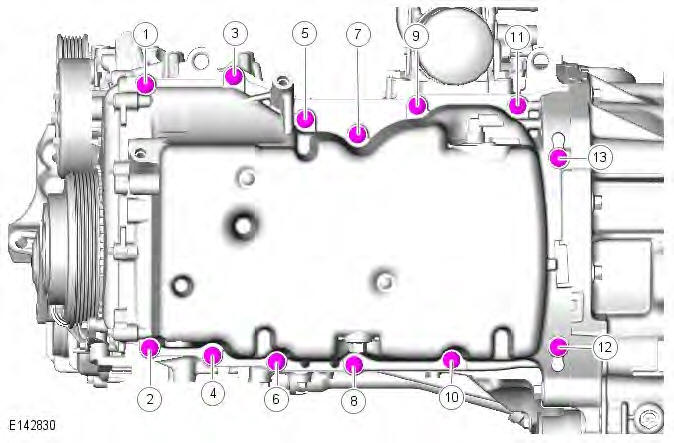
10. Remove the special tool.
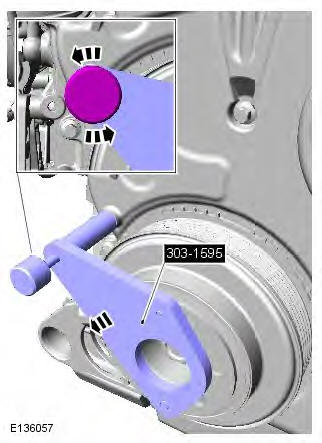
11. Torque: 48 Nm
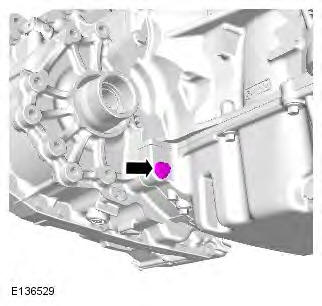
12. Torque: 48 Nm
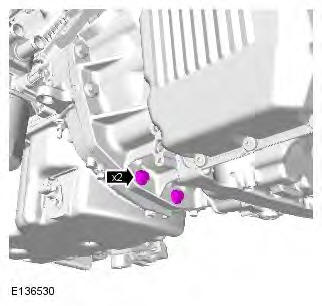
13. Torque: 8 Nm
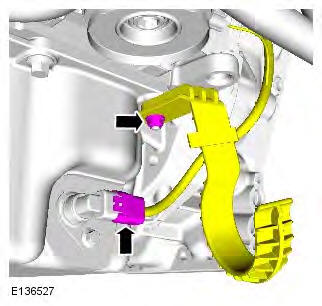
14.
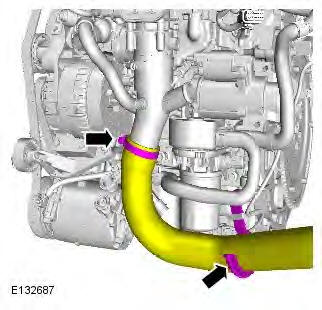
15. Torque: 4 Nm
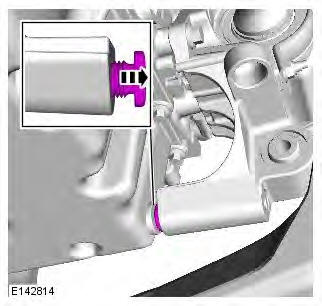
16. Torque: 35 Nm
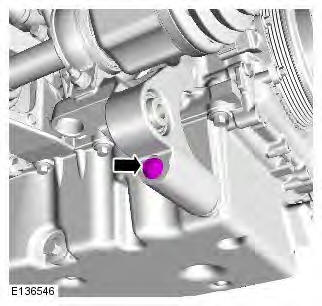
17. CAUTION: Make sure that the component is clean, free of foreign material and lubricant.
- Torque: 20 Nm
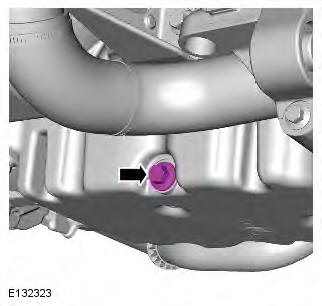
18. Torque: 25 Nm
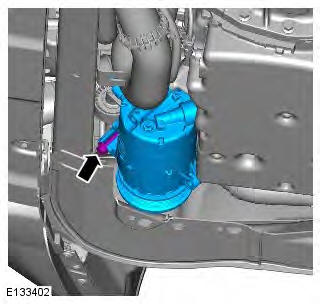
19. Torque: 25 Nm
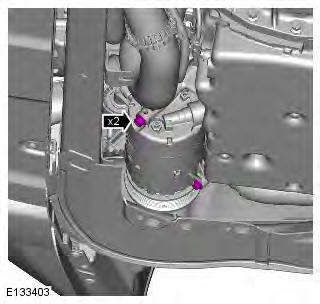
20. CAUTIONS:
Lubricate the new seals with clean refrigerant oil.
Make sure that all blanking caps are removed.
- Torque: 24 Nm
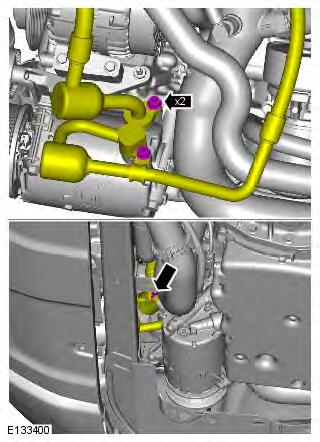
21.
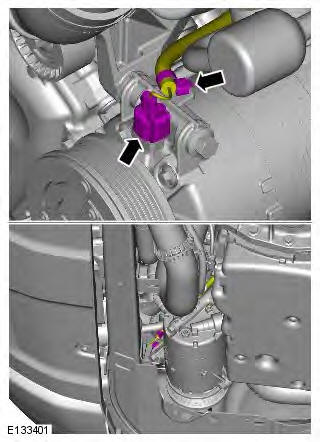
22. Install the accessory drive belt to the A/C compressor pulley.
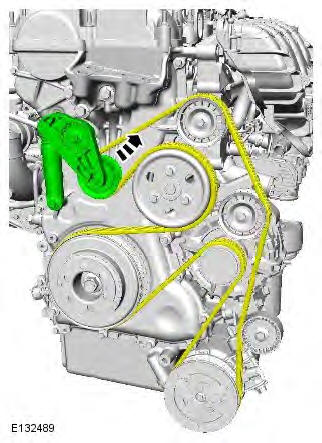
23. Torque:
- Bolts 25 Nm
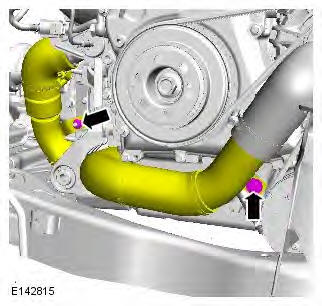
24.
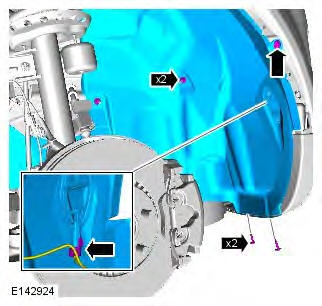
25. Refer to: Engine Undershield (501-02 Front End Body Panels, Removal and Installation).
26. Lower the vehicle.
27. Install the RH front wheel and tyre.
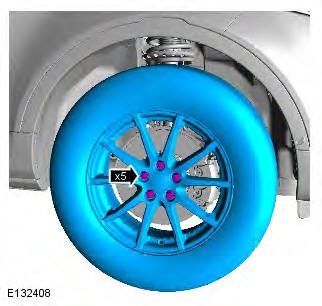
28. Refill engine with the oil previously collected.
29. Refer to: Air Conditioning (A/C) System Recovery, Evacuation and Charging - GTDi 2.0L Petrol (412-00 Climate Control System - General Information, General Procedures).

